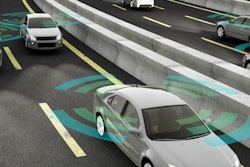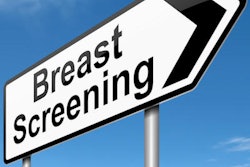
Incorporating patient navigation services -- such as language translation, reimbursement for transportation, help with interpreting doctor recommendations, and emotional support -- into breast and cervical cancer screening programs improves women's adherence to screening guidelines. But it also increases healthcare costs, according to a study published in the September issue of Cancer Causes & Control.
However, these increased costs should be considered in terms of the larger healthcare picture, wrote a team led by Benjamin Allaire of RTI International in Research Triangle Park in North Carolina.
"If incorporating patient navigation into [breast and cervical cancer screening programs] improves screening frequency for irregular screeners and increases diagnostic resolution rates for women who have abnormal screening results, our results suggest that the program may be cost-effective," the team wrote (Cancer Cause Control, September 2019, Vol. 30:9, pp. 923-929).
Critical care
The U.S. Centers for Disease Control and Prevention established the National Breast and Cervical Cancer Early Detection Program (NBCCEDP) in 1990. It operates in all 50 U.S. states; Washington, DC; six U.S. territories; and 13 American Indian and Alaska Native tribal jurisdictions, offering breast and cervical cancer screening to uninsured and underinsured low-income women. The program has provided more than 12.7 million breast and cervical cancer screening tests to more than 5.3 million women since its inception, the authors noted.
Despite the services the program offers, there remain barriers to cancer screening, such as language, low health literacy, geographic isolation, transportation costs, lack of paid sick leave, and mistrust of the medical system, according to the group.
"Implementation of patient navigation services has been shown to reduce some of the barriers experienced by women and improve compliance with breast cancer screening," the team wrote. But, "to date, there have been limited economic assessments of the NBCCEDP and no systematic studies conducted on the cost and effectiveness of the program's patient navigation activities."
To address this knowledge gap, Allaire and colleagues assessed the cost-effectiveness of putting patient navigation services into practice within the program. The team used a breast cancer simulation model to estimate a population group of women from ages 40 to 64 and calculated the women's screening frequency as well as screening and diagnostic costs.
The group calculated patient navigation costs using survey data from a program in Colorado that was funded by the screening program in 2011: the cost of the service at $8.52 per screen and $30.53 per abnormal screen result.
The researchers used their model to assess the following scenarios:
- No screening at all (clinical detection could still occur)
- No screening program (less frequent screening in absence of any program)
- Screening program with no patient navigation
- Screening program with patient navigation
Allaire and colleagues found that patient navigation improved outcomes yet also raised costs.
| Screening program scenarios, with and without patient navigation | ||||
| Parameter | No screening | No program | Program with no patient navigation | Program with patient navigation |
| Mammograms per woman, lifetime | 0 | 12.3 | 17.3 | 17.6 |
| Breast cancer mortality | 4.97% | 3.93% | 3.61% | 3.53% |
| Clinically detected rate | 13.3% | 7.17% | 5.56% | 5.27% |
| Screen detected rate | 0% | 6.56% | 8.25% | 8.55% |
| Missed diagnostic follow-ups | 0 | 0.020 | 0.025 | 0.017 |
| Costs per woman | ||||
| Treatment cost | $5,258 | $5,560 | $5,669 | $5,689 |
| Screening cost | $0 | $1,771 | $2,594 | $2,635 |
| Diagnostic cost | $0 | $233 | $328 | $342 |
| Patient navigation cost | $0 | $0 | $0 | $126 |
| Total cost | $5,258 | $7,564 | $8,589 | $8,791 |
| Quality-adjusted life | 21.898 | 21.945 | 21.963 | 21.969 |
Patient navigation service does cost more, but it improves patient outcomes, according to Allaire and colleagues.
"For low-income, un- and underinsured women who face multiple personal and health system barriers, patient navigation provides the necessary support and resources to help them complete screening and diagnostic follow-up," they wrote.
Safety net
The study findings have implications for breast cancer screening among low-income women, the researchers noted, especially in light of the Patient Protection and Affordable Care Act, which expanded health insurance coverage in this population -- although many women remain uninsured.
"This expanded coverage, particularly in low-income populations, may not be enough to ensure that beneficiaries actually received cancer screening," the group wrote. "Therefore, patient navigation may be essential to ensure that these women get appropriate and complete screening and diagnostic services."




















